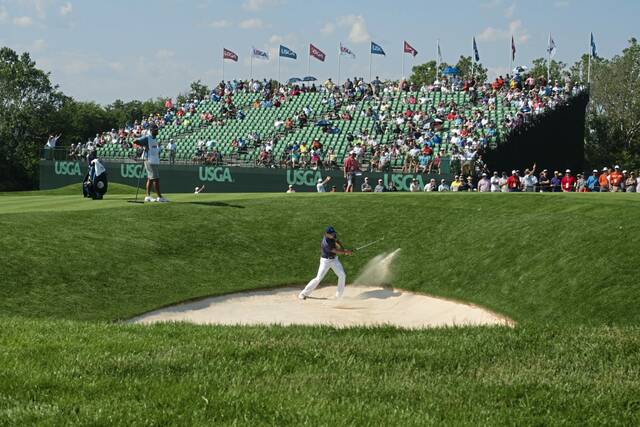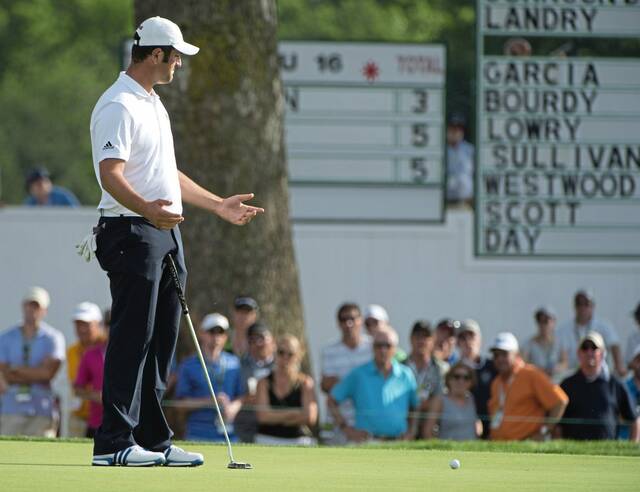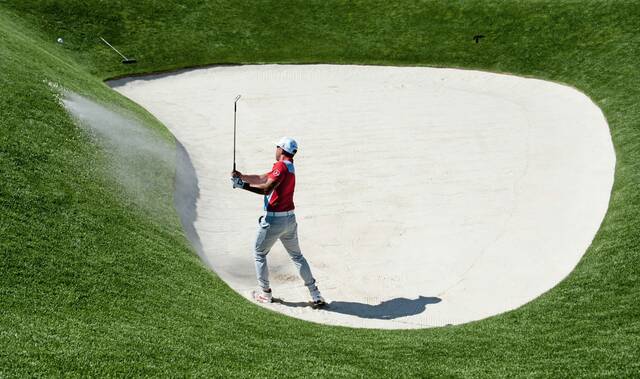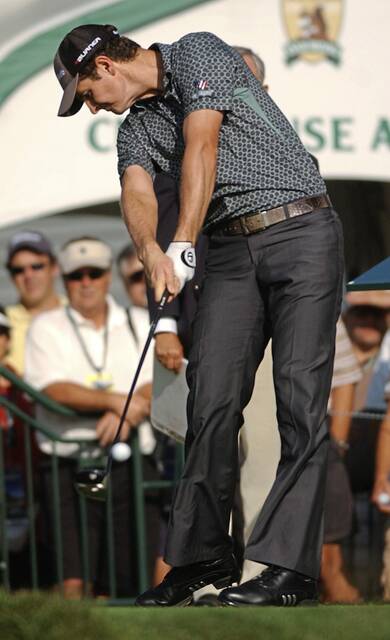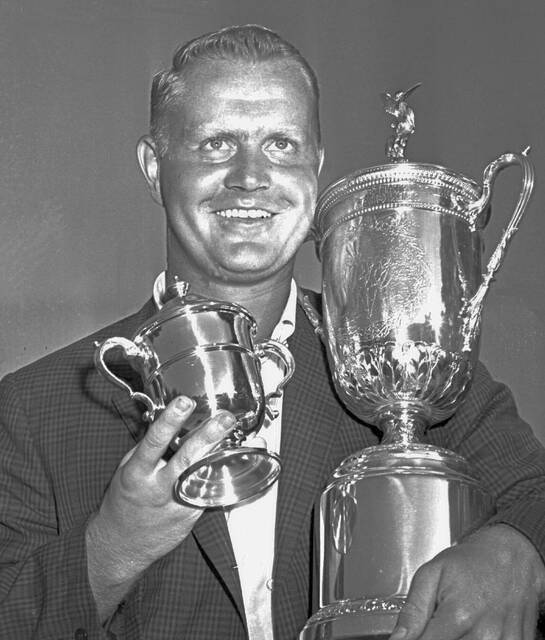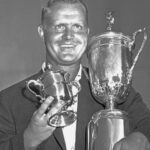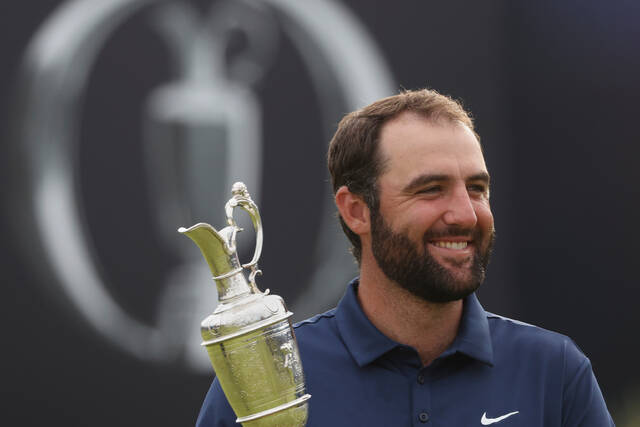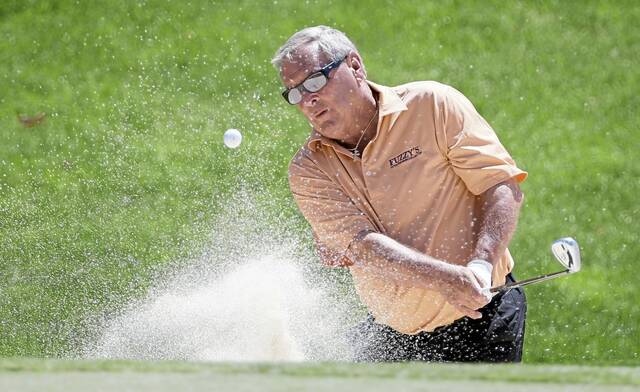From the pristine fairways and lightning-fast greens to the punishing bunkers and club-twisting rough, Oakmont Country Club is one of the toughest tests for even the world’s best golfers, who will descend upon Western Pennsylvania for the 125th U.S. Open from June 12-15.
TribLive is producing a hole-by-hole look at what makes Oakmont Country Club one of the most popular and anticipated stops for the USGA.
Hole 17 breakdown
Length: 312 yards, Par 4
Handicap: 18
2016 U.S. Open stroke average: 3.89
Description
No. 17 at Oakmont Country Club is statistically the easiest hole on the course, for whatever that’s worth given the trouble players can find around the green.
The shortest par 4 at the club provides entertainment for viewers but pain for players who must weigh the risk and reward of trying to drive the green, which will measure around 312 yards, but is also elevated from where the tee boxes are stationed.
There are a bevy of greenside bunkers, including “Big Mouth” on the right, that will cause some hesitation from the tee. Players can also lay up with an iron, but that creates a scary wedge approach into a small green that slopes away from the fairway, making distance control and spin crucial.
No. 17 has been a pivotal hole that has helped decide the U.S. Open in the past. Ben Hogan drove the green in 1953, made birdie and won. Fellow champions Johnny Miller parred it in 1973, as did Dustin Johnson in 2016.
“I believe this hole will be pivotal,” said USGA chief championships officer John Bodenhamer.
During the 2016 U.S. Open, there were 129 birdies and six eagles on No. 17, the most on the course. There also were 70 bogeys and seven double bogeys.
Memorable moment from U.S. Open
The 17th hole was a key moment in the 2007 U.S. Open. Angel Cabrera left the door open when he bogeyed to fall to 5-over-par. Both Jim Furyk and Tiger Woods were unable to take advantage. Furyk also bogeyed to fall to 6-over and Woods managed par to stay at 6-over, which is where they finished, just one stroke behind as Cabrera captured his first major championship.
How the locals play it
Gregor Meyer is a Fox Chapel native who won the 2016 WPIAL championship at 15 years old at Oakmont, shooting a 1-under 70. He went on to a college career at High Point, where he was first-team all-conference in 2023 and ‘24 and finished third at the Big South Conference championship. Meyer won the 2021 West Penn Open and 2023 Pennsylvania Amateur and spent this week at PGA America’s Q-School in Indiana.
“All you can see is the hill and a tiny, tiny little pin on the horizon. They definitely made that hole, I would say not harder, but reconfigured those bunkers to where it’s not as easy to get it up the left side now. They extended that bunker to where that landing spot is a little harder.
“It’s just so daunting, and you have to control your spin so well from the fairway (if you lay up). If you hit an iron, you have to hit it as hard as you would a driver off the tee. You’d much rather have a chip with a bad angle that you can be a little more conservative than a wedge shot that you are staring at going over a bunker and you don’t want to go too long to be in that back bunker. You would rather hit it way left and come up short left for your chip shot than you would coming up short from the right side.”
Around the U.S. Open
Spotlight
Justin Rose
One of the most experienced players on tour, Justin Rose is playing in his 20th U.S. Open. The 2013 U.S. Open champion at Merion Golf Club, Rose made a run a second major title earlier this year at the Masters before finishing second to Rory McIlroy and has vaulted to 19th in the Official World Golf Ranking.
Rose also had runner-up finishes at the 2017 Masters and last year’s British Open.
He has missed the cut in four of his past five U.S. Open appearances, including last year when he shot 6-over-par through two rounds at Pinehurst.
He finished third at the 2019 U.S. Open at Pebble Beach and 10th the previous year at Shinnecock Hills.
When he played in the 2016 U.S. Open at Oakmont, he shot 8-over for the first two rounds and missed the cut. In 2007 at Oakmont, he tied for 10th at 11-over.
Rose has 25 wins as a professional, including 11 on the PGA Tour. He also spent time as the No. 1 player in the Official World Golf Ranking in 2019.
In addition to being part of six European Ryder Cup teams and the 1997 Walker Cup team, Rose won Olympic gold in Rio de Janeiro in 2016.
By the numbers
53 — Holes-in-one during U.S. Open championship competition
3 — Double eagles recorded in U.S. Open championships
19 — Highest score on one hole by Ray Ainsley in 1938 on the 16th at Cherry Hills
Quotable
“I do remember the 17th hole (at Oakmont), that short par-4. I drove it into the bunker on the right and then hit it out on the fringe and played a poor chip past the hole about 5 feet, and I made this downhill slider that had it not gone in the hole, it would have gone off the green. And Bobby Jones wrote me a note. He says, ‘I came right out of my chair when you hit that putt,’ which, obviously, he couldn’t.”
— Jack Nicklaus, who won the 1962 U.S. Open at Oakmont, while speaking at a news conference before the Memorial Tournament on May 27 in Dublin, Ohio
U.S. Open history
Here’s a look at all-time U.S. Open champions by nationality (Number of winners in parentheses):
88, United States (61)
13, Scotland (9)
8, England (8)
5, South Africa (3)
2, Jersey (2)
2, Australia (2)
2, Northern Ireland (2)
1, New Zealand (1)
1, Argentina (1)
1, Germany (1)
1, Spain (1)
If you missed it
No. 1: U.S. Open hole by hole: No. 1 at Oakmont among world’s toughest opening tests
No. 2: U.S. Open hole by hole: Sloping green among challenges on No. 2 at Oakmont
No. 3: U.S. Open hole by hole: Church Pews a landmark hazard on No. 3 at Oakmont Country Club
No. 4: U.S. Open hole by hole: Birdie opportunity within reach on No. 4 at Oakmont
No. 5: U.S. Open hole by hole: Aggressive play can be rewarded on No. 5 at Oakmont
No. 6: U.S. Open hole by hole: Danger lurks on, around No. 6 green at Oakmont
No. 7: U.S. Open hole by hole: Players will face mental test with club selection on No. 7 at Oakmont
No. 13: U.S. Open hole by hole: A short par 3, Oakmont’s No. 13 is surrounded by sand
No. 15: U.S. Open hole by hole: Piano Keys, massive green among trouble spots on No. 15 at Oakmont




